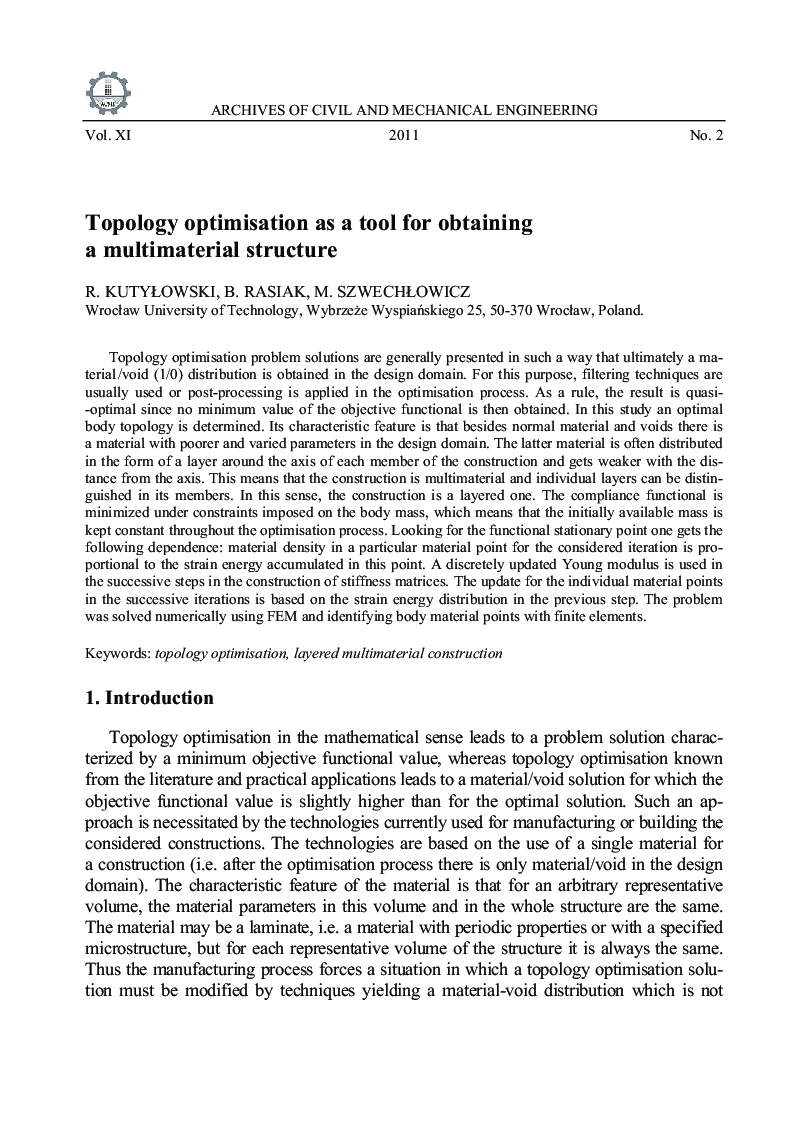| Article ID | Journal | Published Year | Pages | File Type |
|---|---|---|---|---|
| 246163 | Archives of Civil and Mechanical Engineering | 2011 | 19 Pages |
Topology optimisation problem solutions are generally presented in such a way that ultimately a material/void (1/0) distribution is obtained in the design domain. For this purpose, filtering techniques are usually used or post-processing is applied in the optimisation process. As a rule, the result is quasi-optimal since no minimum value of the objective functional is then obtained. In this study an optimal body topology is determined. Its characteristic feature is that besides normal material and voids there is a material with poorer and varied parameters in the design domain. The latter material is often distributed in the form of a layer around the axis of each member of the construction and gets weaker with the distance from the axis. This means that the construction is multimaterial and individual layers can be distinguished in its members. In this sense, the construction is a layered one. The compliance functional is minimized under constraints imposed on the body mass, which means that the initially available mass is kept constant throughout the optimisation process. Looking for the functional stationary point one gets the following dependence: material density in a particular material point for the considered iteration is proportional to the strain energy accumulated in this point. A discretely updated Young modulus is used in the successive steps in the construction of stiffness matrices. The update for the individual material points in the successive iterations is based on the strain energy distribution in the previous step. The problem was solved numerically using FEM and identifying body material points with finite elements.
